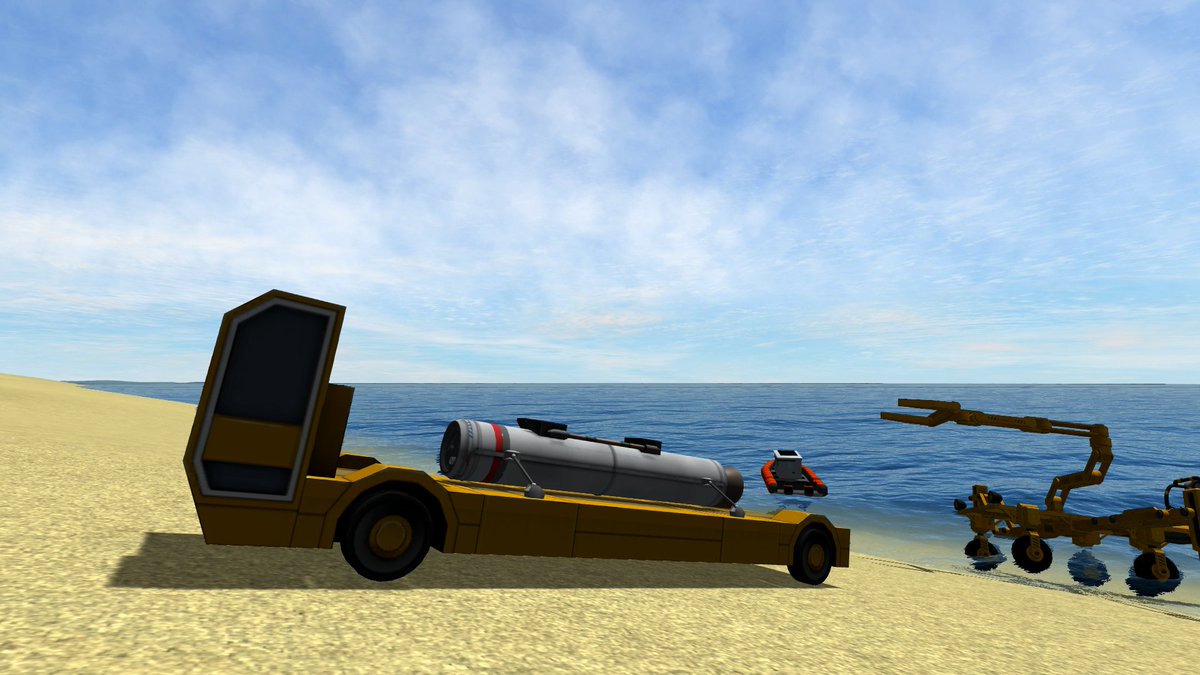The data gathered from Progeny rocket flights made over the past several months have allowed scientists to put forth strong theories on what kind of radiation environment exists up in space near the planet. It will take more missions, especially orbital ones, to prove these theories but observations strongly fit with the ideas being tested. The most conclusive evidence so far came from a mission launched last month, which had a Progeny Mk6 Block I fly over the night side of the planet. Before that, we have posted other reports on the missions sent up to gather data about the so-called hazardous radiation region, which you can start reading here if you need to recap.
The two main theories that are being put to work in understanding the hazardous radiation region are keomagnetism and kerbolar wind. The first involves the magnetic field that is generated by Kerbin and connects from pole to pole, just as if a giant bar magnet were stuck through the middle of the planet from top to bottom. How this field is created and maintained is still a hot topic of debate but its relation to the radiation detected in space is that it comes from charged particles. These particles can be trapped by the magnetic field into a specific region, now defined as a “belt” because it circles the planet’s mid-section over the equator. It’s believed these particles come from the sun, and are scattered off in every direction out into space upon a “wind” that carries them outwards from the sun’s atmosphere. The exact nature of what drives these particles away from the sun is still unknown, but the original idea was that they were carried along gently, more of like a breeze. Strong enough to dictate the orientation of comet tails, but not having much else of an effect on objects in the system.
Observations, however, were telling a different story. The one problem scientists had the most trouble figuring out was why the belt seemed to change shape. All the missions, as noted in the previous report linked above, entered and exited the belt at different altitudes. The magnetic fields appeared to be in flux, or misshapen, but all the models that scientists tried to build failed to match any of the data gathered by the rocket flights. Wernher von Kerman, our Head of R&D, was the first to point out that we had up until this point only launched rockets during the day. What if the sun had a more direct effect on the magnetic field than was thought? This led to the night launch that brought back the data scientists had been missing – the rocket flew up to 460km before radiation levels began to climb above background levels. On all day side flights the highest point reached before higher levels of radiation were detected was 360km. The belt on the night side was much higher than on the day side!
The observation has led to a change in mindset regarding the kerbolar wind – it blows fiercely. It blows so hard the magnetic field is compressed on the day side of the planet. We now have a much better idea of what the radiation belt looks like:

View from the top (left) and side (right). Shape is approximate, especially side view – tapering may not be that defined
If future missions prove this model of the belt to be correct, it is great news for future kerbed space flight since it would be a well-defined region that could be avoided, with plenty of room in Low-Kerbin Orbit below the belt’s boundaries. However there still might be a bigger problem – literally. A second, larger region of hazardous radiation could exist we haven’t discovered yet. At least, we haven’t discovered it from space. The polar regions of the planet have a band of latitudes (roughly 70°-76°) in which higher-than normal radiation can be detected. The radiation is greater at higher altitudes, which indicates it is coming from above the atmosphere rather than from within the planet. This then leads us to wonder if it exists in space over the poles or extends out into space along the magnetic field?

(Left) Are the particles trapped directly over the poles? (Right) Or are they somewhere in a region around the planet?
Our best hope of learning the answer to this is the Progeny Mk6 Block II partaking in a full-duration mission that doesn’t cut off its apokee height. If the field does exist around the planet rather than just over the poles, launching up into the day side and going out as far as we can might give us an answer. Then again it might not. At least now we have an even better reason to try than just saying we managed to launch a rocket that high.


















